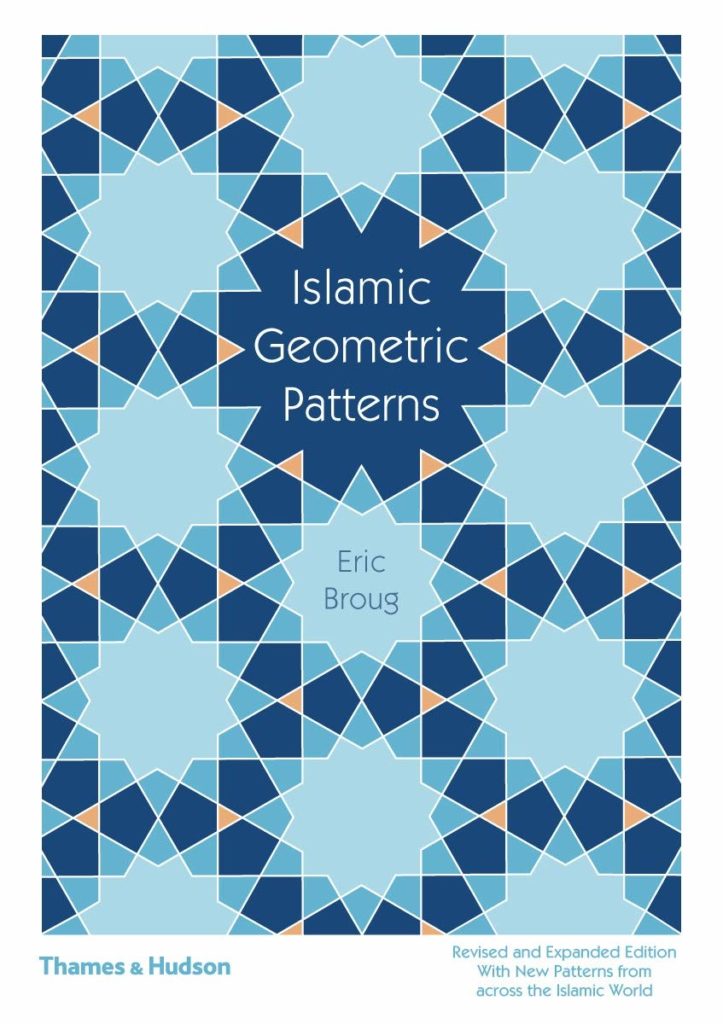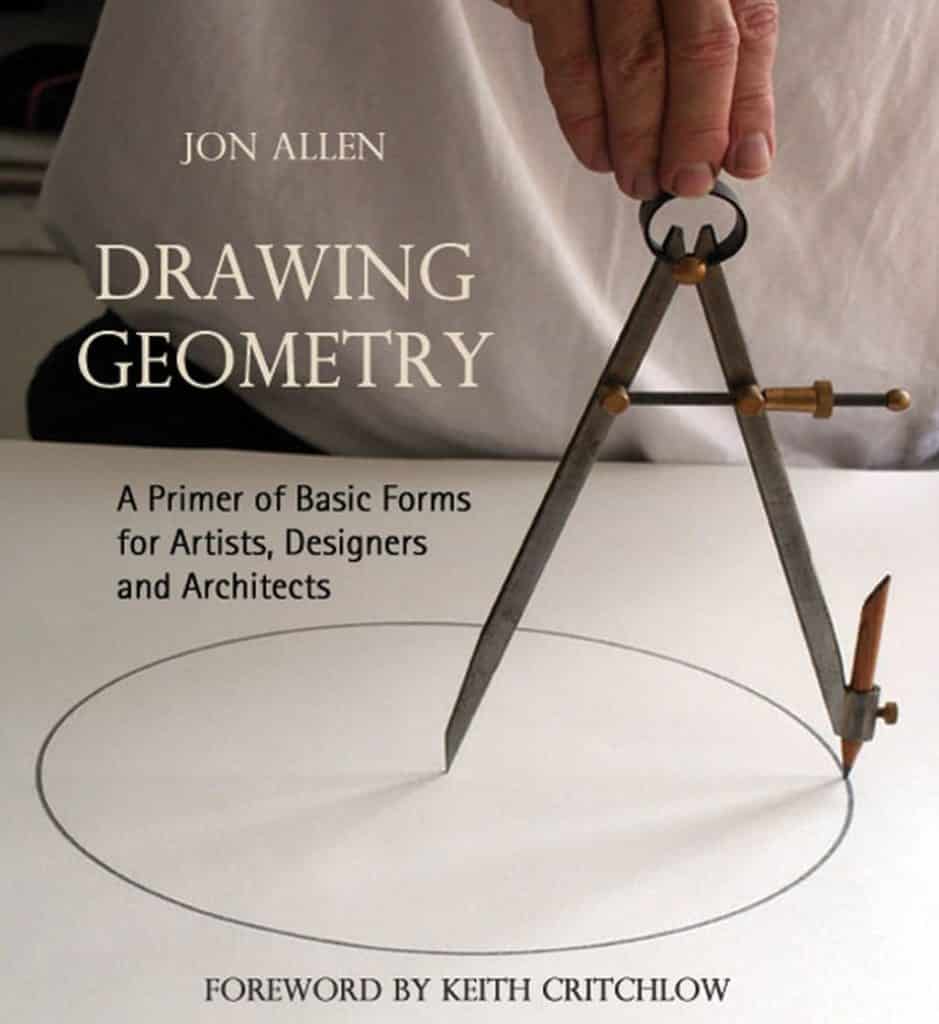Islamic geometry stands as a testament to the harmony between art, mathematics, and spirituality, offering an intriguing pathway into the world of Islamic art and architecture. This discipline, characterized by its intricate patterns and mesmerizing designs, has fascinated scholars, artists, and enthusiasts for centuries. The literature on Islamic geometry is vast and varied, comprising works that range from scholarly analyses to practical guides on recreating these patterns.
In this compilation, I present the top 10 Islamic geometry books, each offering a unique perspective on this captivating subject. Whether you are a novice eager to dip your toes into the world of geometric patterns or a seasoned enthusiast seeking deeper insights, this list promises a comprehensive guide to the wonders of Islamic geometrical art.
Islamic geometry has had a profound impact on both the artistic and architectural realms, transcending its historical origins to influence modern design and aesthetics. Its principles of balance, symmetry, and intricate pattern work celebrate the unity of the infinite and the finite, the celestial and the earthly. This art form not only adorns mosques and palaces, making them visually stunning, but it also symbolizes the seamless blend of science, art, and spirituality that is central to Islamic culture.
Beyond its aesthetic appeal, Islamic geometry has also contributed to the field of mathematics, particularly in algebra and geometry, showcasing the intellectual prowess of Islamic scholars of the past. In contemporary times, the principles of Islamic geometry continue to inspire architects, designers, and artists around the world, proving its enduring legacy and relevance.
10+ Beautiful Islamic Geometry Books

Indeed, Islamic geometry books are not just educational resources; they also serve as exquisite coffee table books and hobby books. The visual allure of Islamic geometric patterns, with their complex interlacing lines and vibrant colors, makes these Islamic geometry books a captivating sight for any living space. For hobbyists, the systematic approach to creating geometric patterns offers a deeply satisfying and meditative practice. These Islamic geometry books, therefore, not only beautify one’s home but also provide a source of creative inspiration and relaxation, bridging the gap between decorative art and intellectual pursuit.
“Mosques: Splendors of Islam” is a resplendent exploration of Islamic sacred architecture that charts the historical and stylistic evolution of mosques from their origins to modern-day masterpieces. With exceptional clarity and depth, this book serves not just as an artistic showcase but also as a scholarly resource, rich with insights from leading academics in the field of Islamic art and architecture.
Each page of this stunning volume is a testament to the grandeur and beauty of mosques, featuring over sixty venerated structures across continents. The photographs, many commissioned for this work, are not simply illustrations; they are profound narratives in light and stone, telling stories of faith, culture, innovation, and tradition.
The key themes of the book center on the architectural splendors and the intricate geometric patterns and designs that are synonymous with Islamic art, particularly found in mosque structures. It provides a lens into the confluence of aesthetics and spirituality that these religious edifices symbolize across different Islamic dynasties and geographic regions.
Mosques: Splendors of Islam is thoughtfully organized with essays from eminent authorities such as Professor Sussan Babaie, Walter B. Denny, and George Michell, among others, who offer context and analysis that deepen the reader’s understanding. From the Great Mosque of Córdoba to the futuristic lines of the Sancaklar Mosque, the selection encompasses a comprehensive range of styles and eras.
Key highlights are the visual presentations of exteriors, interiors, adjacent gardens, fountains, intricate calligraphies, and tilework that adorn these mosques. The book doesn’t just catalog Islamic monuments; it breathes life into them by offering a look into their fascinating histories and the dynasties that shaped their construction, from the Umayyads to the Mughals.
The appendage of original and archival photographs enriches the narrative, offering both a panoramic and an intimate look at the featured mosques. This visual documentation, combined with the scholarly essays, makes the volume a true convergence of artistry and academia.
In conclusion, “Mosques: Splendors of Islam” is an impressive addition to the literature on Islamic architecture. It is a treasure trove for enthusiasts of Islamic geometric patterns, students of architectural history, or anyone with an appreciation for the sublime beauty that religious devotion has inspired throughout the centuries. Capturing the essence of the Islamic spirit, this book is a well-curated guide through the palatial gates of some of the world’s most awe-inspiring spiritual sanctuaries.
Islamic Geometric Design
In the realm of art and design, there are specialties that astonish and captivate not just the eye but the intellect- and Islamic geometric design is certainly among the most impressive. “Islamic Geometric Design” by Eric Broug is more than a book; it’s a tribute to a form of artistic expression woven through centuries of Islamic history.
Broug’s masterwork stands out as one of the best on the subject, a sentiment that echoes through the pages adorned with 800 illustrations, both in color and black and white. The meticulous research and visual documentation collated in this volume showcase the author’s dedication to unraveling the intricacies of this design tradition.
Broug takes his readers on an enlightening historical and cultural expedition, starting from North Africa, sweeping through the Middle East, and all the way to Iran and Uzbekistan. The timeline stretches from the splendor of the eighth century right up to the nineteenth. Through the author’s expert narrative, we come to understand how these mesmerizing patterns, executed with the simplest tools—rule and compass—require no mathematics but instead rely on a profound understanding of the properties of geometry.
Islamic Geometric Design demystifies the process by which such designs were conceived, charting a course through the creative seas of fourfold, fivefold, and sixfold patterns, and not shying away from the complexity of combined patterns. Broug’s insights encourage readers to look beyond the aesthetic to comprehend the ‘how’ and ‘why’ of these designs. Furthermore, he challenges them by presenting opportunities to replicate these geometric marvels, providing an engaging and interactive dimension.
One striking feature of this work is its accessibility. While the subject matter might seem niche, Broug makes it approachable and educational for novices and experts alike. Despite its scholarly approach, the book is not just a collection of analyses but is designed to inspire artists, designers, and lovers of patterns to explore the rich tradition of Islamic geometric design.
“Educational” and “inspirational” are terms that just scratch the surface when it comes to this seminal book. “Islamic Geometric Design” goes beyond a mere presentation of patterns—it is an immersive engagement with history and a guidebook that encourages creativity and design.
Whether you have foundational knowledge of Islamic art or you’re exploring it for the first time, Broug’s book stands out as an invaluable resource. In it, the timeless beauty of Islamic geometric designs is celebrated, analyzed, and brought to life, enriching both the mind and the spirit.
In essence, Broug does not just present patterns—he offers a lens through which we can appreciate a profound symbol of cultural identity and continuity. A must-read for enthusiasts of art, history, and design—this book will leave you with a deeper appreciation of one of the world’s great artistic traditions.
In “Islamic Geometric Patterns: Their Historical Development and Traditional Methods of Construction,” author Jay Bonner takes the reader on a profound journey into the heart of Islamic art and architecture, focusing on the intricate world of geometric patterns.
At the core of Bonner’s work is the detailed exploration of the polygonal technique, a foundational method in creating these ornamental designs. Through meticulous study, he resurrects this nearly lost art form, offering rich historical evidence of its use and shedding light on a vital aspect of Islamic ornamentation.
Islamic Geometric Patterns does not merely catalogue patterns but delves deep into the development of these intricate designs over time. Bonner examines their significance amid the broader spectrum of Islamic arts, discussing the intertwined relationship of geometry with Islamic calligraphy, floral motifs, and domed decorative elements.
With over 600 captivating color images, Bonner’s scholarly endeavor is both an intellectual treat and a feast for the eyes. The visuals work hand-in-glove with the text to illustrate the complex beauty of Islamic geometric patterns and the sophisticated understanding required to create them. The book achieves a rare balance—it is both aesthetically pleasing and inherently educational.
As an architectural ornamentalist, scholar of Islamic design, and a veteran contributor to significant architectural endeavors in the Islamic world, Bonner’s authority on the subject is clear. With a comprehensive background that mixes practice and theory, he provides insights that only a few can offer.
His commitment to the teaching and preservation of traditional methods is palpable throughout the book. For practitioners and enthusiasts alike, Bonner’s work is a thoughtful guide intended to inspire and educate the next generation of artists and designers in the realm of Islamic ornamentation.
Islamic Geometric Patterns is not merely a visual directory; it is an expansive resource for students and scholars of mathematics, Islamic art, and architecture. It also serves as an invaluable reference for artists, designers, and architects keen on integrating historical and cultural accuracy into their modern works.
“Islamic Geometric Patterns” stands out as an exemplary model of how passion, scholarship, and the desire to preserve cultural heritage can come together in an engaging format. Bonner has crafted a work that is as informative as it is inspiring, ensuring that an ancient art form receives the attention and continuation it rightfully deserves.
In conclusion, this book is an exceptional addition to the fields it touches upon, offering a bridge between the past and present, between academic study and practical application. For anyone interested in the intricate beauty of Islamic geometric art or the complex interplay between culture and design, Jay Bonner’s work is a must-read.
In the arena of art and design books, Daud Sutton’s “Islamic Design: A Genius for Geometry” emerges as a profound exploration into the mesmerizing world of Islamic geometric patterns and their intrinsic harmony. This book delves deep into the facets of one of the most sophisticated traditions in the history of human artistic expression, and it does so with a clarity and precision that both educates and inspires.
At the heart of “Islamic Design” lies the concept of harmony—a principle echoed throughout the various craft traditions within the vast tapestry of Islamic art. Countries and cultures within the Islamic world have produced an astonishing variety of artistic styles, yet they all share a unifying visual language that makes them instantly recognizable and immensely appealing.
Sutton details the two fundamental aspects of Islamic design—the flowing elegance of Arabic calligraphy and the enchanting beauty of abstract ornamentation. Both elements serve as a testament to an art form that transcends mere aesthetic and inches towards the divine.
Arabic calligraphy receives due attention as one of the great calligraphic traditions in the world. Sutton vividly showcases how the written word is not just a medium of communication in Islam but also a significant artistic expression capable of embodying profound spiritual significance.
On the more abstract side, Islamic Design: A Genius for Geometry educates readers on the geometric patterns that characterize Islamic design, patterns known for their harmonious and symmetrical subdivision of space. These designs resonate with themes of infinity and a semblance of an omnipresent center, which can be seen as reflecting the infinite nature of creation and the central omnipresence of the divine in Islamic thought.
Complementing the geometric patterns are the stylized plant forms—spirals, tendrils, leaves, buds, and flowers—that represent life’s organic rhythm. These forms are skillfully analyzed, and their symbolic meanings are discussed, shedding light on the importance of natural elements within Islamic art.
For readers interested in geometry, art history, or cultural studies, “Islamic Design: A Genius for Geometry” stands out as both educational and inspirational. Sutton’s narrative is accessible to all, from the curious novice to the seasoned art historian, and the illustrations that accompany the text are as illuminating as they are beautiful.
In conclusion, “Islamic Design: A Genius for Geometry” is a masterful presentation of Islamic artistic tradition, and Daud Sutton deserves commendation for unraveling the complexity of this subject with such eloquence and insight. Whether one is captivated by the intellectual challenge of geometric designs or simply appreciates the serene beauty of Islamic art, Islamic Design: A Genius for Geometry is a valuable addition to any collection.
Arabic Geometrical Pattern and Design is a fascinating exploration into the world of Islamic geometry and its confluence with art. This book draws back the curtain on a path of artistic expression quite distinct from that of European traditions, ignited by a religious prohibition against depicting the human form. Instead, we are swept into the realm of pure abstraction—where geometry meets spirituality and aesthetics.
At its core, Arabic Geometrical Pattern and Design delves into the transformation of a simple artistic impulse into a labyrinth of complex geometric patterns and linear designs. The meticulousness and skill with which these designs were crafted over centuries have culminated in a form of art that transcends time, speaking to a mastery that only devotion and sustained practice could yield.
One of the book’s central premises is the adaptability and variation that Islamic geometrical art offers. With 190 patterns comprising hexagons, octagons, dodecagons, stars, rosettes, squares, pentagons, and heptagons, the book is a treasure trove of designs, each stemming from a few fundamental shapes. A remarkable aspect highlighted is the transformative power of simple adjustments which can give birth to a completely new pattern.
European artists will find themselves intrigued by the stark contrast of approach; the focus on perspective and figurative representation gives way to this sublime abstract art form. It offers a compelling invitation to any artist seeking to step into a different rhythm, enabling the construction of remarkably intricate and sophisticated designs.
Arabic Geometrical Pattern and Design also serves a practical purpose. Aspiring creators can engage directly with the patterns, thanks to the dotted construction lines provided for sections of the plates. This educational approach not only unveils the complexity of the designs but also invites hands-on engagement and perhaps even a meditative appreciation for the art.
Actual applications of these geometrical marvels are not overlooked. The inclusion of twenty-eight examples from Cairo and Damascus, such as sanctuary doors, openwork windows, and inlaid marble pavements, illustrate the tangible beauty of the craft. These real-world instances bridge the gap between theory and application, showcasing how geometric patterns are woven into the very fabric of Arabic architecture.
More than a mere academic text, Arabic Geometrical Pattern and Design is a visual journey. It speaks to those with an aesthetic bend, historians interested in Islamic culture, as well as mathematicians enchanted by geometric perfection. Its appeal is wide-reaching; the reader need not be versed in art or mathematics to appreciate the intricate beauty it displays.
While it is a treasure trove for artists and designers looking for rich sources of Islamic art and design, the book also caters to novices by encouraging individual exploration and adaptation of these time-honored patterns.
Arabic Geometrical Pattern and Design stands as a testament to the artistry and ingenuity of Islamic art. It wields the quiet power to inspire, to educate, and to carry the torch of a vibrant artistic heritage into the hands of contemporary readers and creators. In the swirling symmetry and interlacing forms, there lies a deep respect for tradition accompanied by the gentle whisper of innovation. For those looking to either appreciate or create, this book is undoubtedly a valuable and captivating source.
Whether paired with pen and paper or simply admired with the eyes, Arabic Geometrical Pattern and Design is certain to spark a creative fervor, a fascination with form, and a fresh recognition of patterns that narrate tales as old as time itself.
The world of Islamic art is vast and intricate, with its diverse themes weaving through various mediums and periods. In Islamic Art of Illumination: Classical Tazhib From Ottoman to Contemporary Times, readers are given a golden key to the doors of classical Turkish illumination, known as tezhip.
The book is less of a passive read and more of a visual expedition, crossing through time from the splendor of the Ottoman empire to the modern interpretations that still hold the essence of their origins. The author, an acclaimed artist in the realm of illumination herself, presents not only historical insight but also practical knowledge, blended with the vibrant, aesthetic appeal of the art itself.
The art of tezhip illuminates more than just manuscripts; it illuminates history, craftsmanship, and the perpetuity of an art form. The juxtaposition of traditional and contemporary illustrations provided in the book offers a rich dialogue between the past and present, encouraging readers to appreciate the time-honored techniques through a modern lens.
This detailed, passionate exploration of Islamic illumination art—or tezhip—is replete with vibrant images and thorough explanations. For anyone interested in Islamic art, geometry, or history, this tome serves as both an educational resource and an artistic treasure. It’s a rarity to find a book so dedicated to not just showcasing artwork but also revealing the methodology behind it.
The book highlights enchanting motifs such as buds, roses, and florals, all meticulously rendered to exhibit the balance between geometry and nature that is so characteristic of Islamic art. The author takes meticulous care in explaining the steps and techniques involved in creating these masterpieces, from their conceptual stages to the painstaking details of application.
Art enthusiasts and historians alike will find solace in the pages of Islamic Art of Illumination. Not only does it guide you through the traditional patterns that adorned Ottoman artifacts, but it also shows how these timeless designs have found their way onto everything from book covers to architectural features in contemporary society.
The author’s dedication to her craft and her willingness to divulge its secrets are what truly set this work apart. It is not simply a gallery of images, but rather an educational narrative, revealing the depth and sophistication of Turkish Islamic art.
For those who seek more than a superficial understanding of tezhip, this work acts as an authoritative source on the subject matter. It’s a book that serves the dual purposes of beautifully adorning one’s coffee table while also being dog-eared and annotated by the curious student or the practicing artist.
In conclusion, Islamic Art of Illumination stands as a testament to the beauty and intricacy of Islamic geometric art. It transcends being just a “best book” in the category; it becomes an invaluable resource, a well of inspiration, and truly a collector’s item. Whether you are a scholar, an artist, or a reader with an affinity for Islamic culture, the book promises an enriching experience that is as educational as it is visually stunning. A piece of art in itself, it radiates the devotion and artistry that tezhip represents.
Eric Broug’s comprehensive guide, “Islamic Geometric Patterns,” explores one of the most mesmerizing facets of Islamic art and architecture. With meticulous attention to the history, technique, and spiritual significance of these patterns, Broug offers both the enthusiast and the novice an opportunity to delve deeper into the complex world of Islamic geometry.
The most striking aspect of “Islamic Geometric Patterns” is how the author demystifies the seemingly inscrutable designs that ornament Islamic landmarks. Broug provides a profound understanding that these stunning patterns aren’t a serendipity but the results of deliberate, skilled craftsmanship. He delves into the methods inherited from generations of ancient masters whose work transcends time, providing continuity in the visual language of Islamic culture.
One does not merely read through this book; one practices and participates in the art form. Broug ensures that technical knowledge is accessible to all, starting from the very basics of drawing foundational shapes with a pencil, ruler, and compass. Readers will appreciate the pedagogical approach that builds from simple structures to more intricate designs, categorized into three tiers of difficulty. Each lesson is a patient unfolding of process and technique, encouraging readers to participate in the act of creation.
“Islamic Geometric Patterns” is not confined to theory but offers vivid travel through the Islamic world’s heritage sites. Broug invites readers to virtually wander the corridors of La Mezquita and the Umayyad Mosque, among others, studying their iconic patterns. Alongside over 290 illustrations, these exemplars offer a concrete connection between the artwork on paper and its grand manifestations in stone and tile.
Beyond the mathematical prowess and creative genius lies the universal language of harmony and beauty that transcends cultural barriers. Islamic Geometric Patterns invites readers to connect with a broader human pursuit — the search for meaning expressed through the universal language of art and science.
“Islamic Geometric Patterns” by Eric Broug combines educational rigor with aesthetic appreciation, presenting the intricacies of Islamic patterns in a way that is tangible, inclusive, and inspiring. For those interested in Islamic art, geometry, or simply in expanding their creative vocabulary, this book is a treasure trove that promises hours of exploration and a lasting appreciation for the discipline it unfolds. Whether he’s educating the reader’s mind on precision or engaging their heart with beauty, Broug’s work is as precise and captivating as the patterns it decodes.
From the symmetry that appeals to our innate love for order to the spirituality woven into every curve and line, Eric Broug’s book, Islamic Geometric Patterns, is not just an instructional manual; it’s an invitation to partake in a rich heritage that continues to inspire awe and wonder in its admirers. Truly, “Islamic Geometric Patterns” is a laudable fusion of intellectual depth and accessible craft that is certain to delight and educate for years to come.
“Geometric Patterns from Islamic Art and Architecture” is not merely a book but a voyage across a splendid visual spectrum—a treasure trove for artists, designers, historians, and mathematicians alike.
Robert Field lays down a visual feast that taps into the essence of Islamic geometric patterns, those meticulous arrangements that breathe life into marble and stone. This book serves as a testament to the virtuosity of Islamic artists and craftsmen whose work, steeped in an interplay of science and spirituality, can transform humble buildings into canvases of metaphysical thought.
At first glance, what sets Field’s work apart is his enthusiastic and dedicated methodology. He has traced the footprints of beauty etched in the world’s most awe-inspiring mosques, collecting not just photographs, but stories woven in symmetrical perfection.
Geometric Patterns from Islamic Art and Architecture is an encyclopedia of patterns that pulls off a remarkable feat: it is as much a practical guide as it is an artful narrative. Readers will find themselves enticed by the structured tutorials that break down the elaborate mosaics into understandable steps.
Field reminds us that every swirl, every starburst, and every interlocking shape is more than a mere aesthetic—it’s a language. Each chapter eloquently talks us through the history and significance of patterns found in Islamic art and architecture. The illustrations serve as a bridge between past and present, illuminating the silent stories told by walls and ceilings through centuries.
The balance between technical instruction and historical context will appeal to a diverse audience. While enthusiasts of Islamic art will relish the rich depictions and cultural insights, students and professionals in geometry can marvel at the mathematical precision embodied in these designs. The book stands as a cross-disciplinary resource that eloquently binds art and numeral harmony.
Field is generous with his knowledge, providing readers with a ‘toolbox’ to create their renditions of the intricate patterns showcased. This book can inspire countless projects, giving insights into a world where creativity is bound by rules yet limitless in expressions.
“Geometric Patterns from Islamic Art and Architecture: And how to draw them” is a rare find—a book that educates, inspires, and connects dots across timelines and geographies. Whether you seek a visual delight, a challenge for your artistic skills, or enlightenment about a profound artistic heritage, Robert Field’s masterful compilation will surely exceed expectations.
“Practical Geometric Pattern Design: Geometric Patterns from Islamic Art” is a masterful exploration of an art form that has captured the awe of architects, designers, and art enthusiasts alike. This book is the third installment in a series dedicated to the intricate world of geometric patterns in Islamic art, and it’s as much a tutorial as it is a historical lens on a rich cultural tradition.
The work is meticulously structured to serve as a comprehensive guide, offering a wealth of insights for both the neophyte encountering the complexities of Islamic geometric art for the first time, and the seasoned artist or designer seeking to deepen their understanding of its intricacies.
Practical Geometric Pattern Design skillfully unpacks the mystical allure of geometric patterns, rooting its teachings in the foundational principles of Islamic art. It draws the reader inside the craftsmanship that has decorated the walls of history’s most ornate mosques and palaces, revealing the mathematical precision and philosophical symbolism woven into each design.
The author’s approach rests on the conviction that to truly grasp the elegance of these patterns, one first must comprehend their underlying structure. Chapter 2 is a deep-dive into dissecting complex patterns, illuminating the methodical process that guides the untrained eye to discern the order in what may initially appear enigmatic.
Chapters 3 through 5 ascend the reader into more complex realms, traversing patterns built on triangular and square grids and then venturing into the realms of hexagonal and dodecagonal patterns with local symmetries of D6 and D12. It is a testament to the book’s pedagogical strength that such technical descriptions are rendered digestible and stimulating.
One of the book’s distinctive features is its examination of octagonal patterns in Chapters 6 and 7. Here, the author distinguishes between the eastern patterns of Central Asia and the western motifs of Morocco and Spain. This comparative approach crystallizes the book’s central tenet of Islamic geometric patterns as a cross-pollination of artistic expression and scientific precision.
The final chapter gives a brief overview of the elusive decagonal patterns and nods to further readings supplied by Istanbul Design Publishing‘s earlier works – an inviting gesture to indepth exploration.
“Practical Geometric Pattern Design” is didactic yet remarkably accessible, serving both as an academic text and as an invitation to practice. The instructions are clear, allowing readers to directly engage with the art through experimentation and design. Its pages become a sandbox for the imagination, where artists of all levels can play with form, symmetry, and space.
This book is an invaluable resource for anyone interested in the fusion of history, mathematics, and cultural art. Whether the reader seeks to adopt these techniques for modern design projects or simply to appreciate the aesthetic prowess of historic Islamic art, “Practical Geometric Pattern Design” is a significant artistic and educational resource that undoubtedly earns its place on the bookshelf.
It stands as a vivid reminder of the unity between art and science, the seen and unseen, serving as both a tutorial and tribute to the geometric patterns that continue to enchant the human spirit.
Geometry is not just about mathematics; it’s an essential part of the design, architecture, and art. “Drawing Geometry: A Primer of Basic Forms for Artists, Designers, and Architects” deftly captures the intersection of geometry with the visual arts. This book is both a tool and a tribute to the elegance and usefulness of geometry.
Each chapter unravels the mysteries of shapes, offering the reader a guided tour through the world of angles, lines, and forms. What stands out is the book’s accessibility – it is rare to come across a guide that caters to both the novice and the experienced professional. Step-by-step instructions form the bulk of the content, ensuring that even those with minimal background in geometric construction can easily grasp the techniques.
The author’s methodical approach to explaining how each shape is constructed is one of the book’s strongest assets. By breaking down complex designs into simple foundational steps, the book demystifies the process of drawing accurate and sophisticated geometric patterns.
The visuals in “Drawing Geometry” are clear and informative. The illustrations serve not only as a reference but also as a form of silent mentorship. As readers practice the constructions, they internalize the principles behind the geometry, enhancing their comprehension and ability to apply these shapes creatively in their own work.
While the book primarily functions as a manual, it subtly conveys the beautifully profound nature of geometry. This is where “Drawing Geometry” distinguishes itself – it makes the reader appreciate the underlying principles of balance and symmetry that form the bedrock of good design.
Designers, architects, and artists will find “Drawing Geometry” more than a valuable resource; it’s a companion in the creation process. The book effectively acts as a bridge between knowing about geometric forms and actually being able to create them with precision and beauty.
The meticulous explanations are accompanied by discussions on how these forms can be seen and utilized in various professional scenarios, highlighting the book’s real-world applications.
“Drawing Geometry: A Primer of Basic Forms for Artists, Designers, and Architects” is an exceptional instructional resource that goes beyond geometric theory, providing functional guidance to those who shape the visual world. Its systematic instructions are underpinned by an evident passion for the subject, which both educates and inspires.
Whether you’re a student learning the ropes or a seasoned professional looking to refine your drafting techniques, this book is more than worthy of a spot on your shelf. The skills honed from this primer are not only useful but are foundational to any artist’s or designer’s toolkit.
What is the basic Islamic geometry?
The basic principles of Islamic geometry involve the clever manipulation of these shapes and the use of symmetry and repetition to reflect the infinite nature of creation, suggesting a metaphor for the unity and order of the universe. Through these patterns, a simple set of geometric rules gives rise to endless possibilities, embodying the notion of infinity and the complexity of the divine creation without directly representing living forms.





















